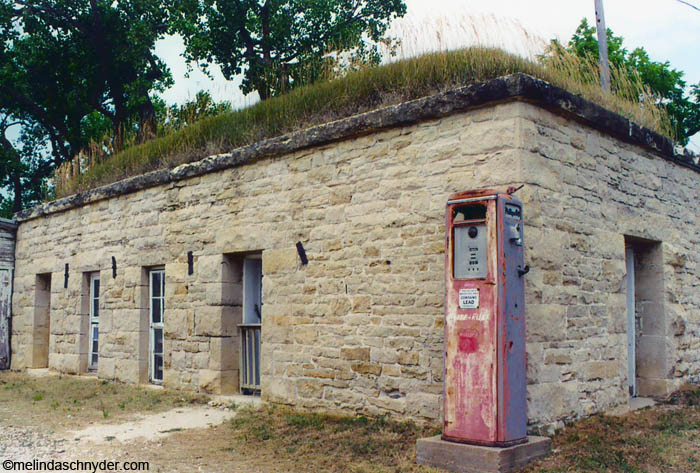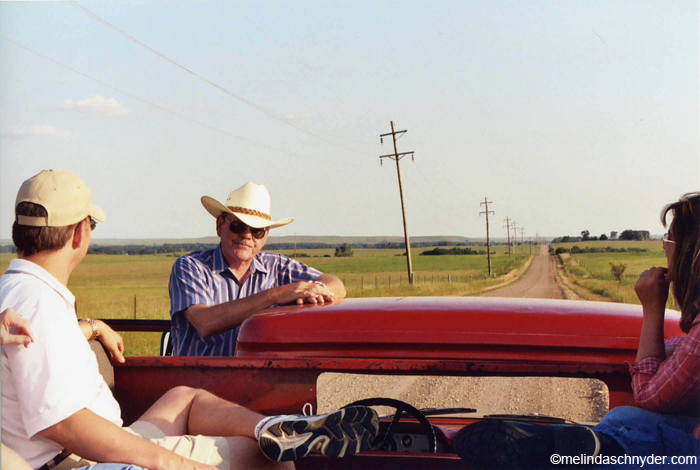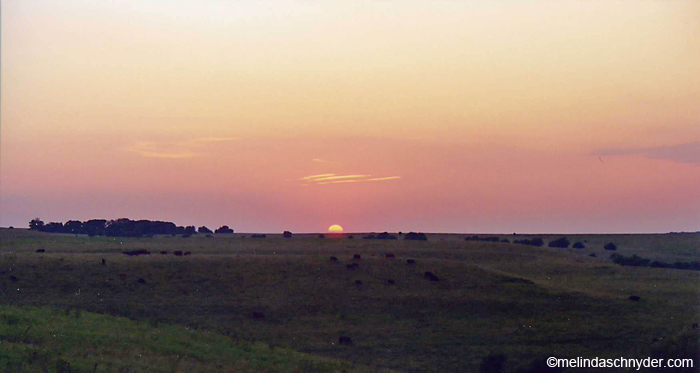Travel writing :: Tours & Tales of the Tallgrass

The chicken house at the Tallgrass Prairie National Preserve in the Flint Hills of Kansas.
This article was published in The Wichita Eagle’s Travel Section.
Tours & Tales of the Tallgrass
National Preserve, Sunset Tour among many Flint Hills attractions
When I pass Exit 92 on the Kansas Turnpike, I’m usually just starting a trip to Kansas City or the 300-mile trek to my hometown in Missouri, or I’m just 42 miles from returning home from one of these places. I’m either in a hurry to get to my destination or eager to get home.
Finally, after nine years of living in Wichita and hundreds of times passing Exit 92, I heeded the sign proclaiming “Flint Hills Scenic Byway” and took the Cassoday exit. I drove a little more than half of the 45-mile corridor from Cassoday to Council Grove on Highway 177 that is considered the scenic byway. This took me through the towns of Matfield Green, Cottonwood Falls and Strong City. I found that I’d been missing out on a fun detour from the numbing turnpike and discovered a great day-trip to share with visiting friends and family.
Besides a beautiful drive, the area is a destination in its own right. You can stop in for a meal, or you can make a day or weekend of it. Entertainment options include the Tallgrass Prairie National Preserve, hiking trails, horseback riding, museums and art galleries, touring the oldest continuously operating courthouse in the state, shopping and dining.
Visiting the Preserve
Of the 400,000 square miles of tallgrass prairie that once covered North America, less than 1 percent remains, according to the National Park Service. Most of that is in the Flint Hills of Kansas, including an 11,000-acre remnant once known as the Z Bar/Spring Hill Ranch that is about 27 miles north of the Cassoday exit.
The National Park Trust, dedicated to saving national parklands and resources, purchased the 10,894 acres of tallgrass prairie in 1994. Two years later the Tallgrass Prairie National Preserve was established – a partnership between the National Park Trust and the National Park Service. It is the only unit of the National Park System dedicated to the tallgrass prairie ecosystem.
Over 400 species of plants, 150 kinds of birds, 39 types of reptiles and amphibians, and 31 species of mammals can be found the preserve. The preserve offers a variety of self-guided and ranger-led activities, and the best way to get closer to this variety of life is by taking the free 7-mile bus tour. The ranger-led tour lasts about 90 minutes; if you visit during the warm months, hope that you get to ride in the small bus with air conditioning.
The ranger makes several stops on the loop to explain the prairie’s ecosystem, the geology that formed the Flint Hills and the legacy of ranching. The final stop is at a point nearly 1,400 feet high, about 300 feet higher than the preserve headquarters. You have to squint to see the hint of civilization past the rolling hills, and quietness is broken only by other visitors asking questions of the ranger.
During a July visit, the only visible wildlife included several birds soaring overhead and a few head of cattle that soon would be shipped off to feed lots. That will change, however, when the plan to reintroduce Bison is completed (READ THIS UPDATE ON BISON AT TAPR). Rangers advise that the best time to see wildlife, such as coyotes, collard lizards and lesser prairie chickens, is in early spring.
With such a dry season, wildflowers weren’t abundant in July either. Rangers said the best place to view taller grass and wildflowers is on the hiking trails where cattle don’t graze. The Southwind Nature Trail is a 1.75 mile trail from the ranch headquarters to a little one-room school house on the hill and back. The school house is not open but along the way you’ll walk through an array of grasses and flowers, passing the limestone and flint that was formed between 200 and 300 million years ago and gives the area its name.
Other free activities at the preserve include touring the massive three-story barn that houses antique farming equipment, watching a 10-minute site orientation video and taking a guided tour of the limestone ranch house built by Stephen F. Jones in 1881. The 11-room house is characteristic of the Second Empire style of 19th century architecture and was designated a National Historic Landmark in February 1997. On the tour, rangers talk about the building process and the history of the Jones family and subsequent owners.

A tour of the Flint Hills of Kansas.
Dinner & a movie, Flint Hills Style
Another way to see the tallgrass of the Flint Hills is aboard the Prairie Drifter, a 1958 wheat truck that takes riders on a history lesson along the backroads of Chase County.
The Prairie Drifter is operated by Suzan Barnes, owner of The Grand Central Hotel & Grill in Cottonwood Falls, and Dan Riggs, a self-proclaimed student of history whose day job is park ranger at the National Preserve.
We started the evening with an early dinner at The Grand Grill, a restaurant known for its steaks but offering a broad menu. Shortly after 6 p.m. we boarded Ol’ Red, the restored Ford featuring cushioned seating for up to 16 in its open-air bed. Riggs led our tour, which covered 20 miles in about two hours and thirty minutes. We made five stops, at which Riggs would weave together a lesson in local history and folk lore with a peppering of jokes. We saw turkeys, horses, cattle, a deer and its fawn, and the occasional farm dog that ran out to chase the truck a few feet. We heard the calls of Bob White Quail, the buzzing and chirping of millions of insects and no cell phones.
Riggs has lived in the area most of his life. He spent 37 years running an interior design business in Emporia with his wife and after retiring, he moved to Cottonwood Falls to run a bed and breakfast. He started giving these tours about 10 years ago, and recently found himself driving a group of elderly locals whom he feared knew more about the area than he did. When the tour ended, one 80-year-old man told Riggs he’d learned much about Chase County.
On our tour, Riggs hosted seven passengers from the Wichita and Kansas City areas. He answered questions at each stop, and he managed to coordinate with Mother Nature to wind up on a certain hilltop just in time for a beautiful, unobstructed sunset. We took a different route back to The Grand Central Hotel, arriving about 9 p.m. Some passengers opted for dinner before driving home, others stayed the night at the hotel.
My time in Cottonwood Falls and the surrounding area proved that sometimes it’s worth taking the long way home.

IF YOU GO
For a complete listing of shopping, dining and lodging options, as well as attractions and upcoming events, visit www.chasecountyks.org.
What: Tallgrass Prairie National Preserve
Where: 2 miles North of Strong City on Hwy. 177
Hours: 8:30 a.m.-4:30 p.m. daily (weather permitting). Check website for list of holiday closings.
Admission: free
Activities: There are several free activities such as historic house tours and prairie bus tours. Check the online schedule at http://www.nps.gov/tapr/planyourvisit/index.htm and be sure to call ahead to check availability: (620) 273-8494
This article was published in The Wichita Eagle in 2003; when I checked in May 2013, the Prairie Drifter was currently not in operation.
0 Comments